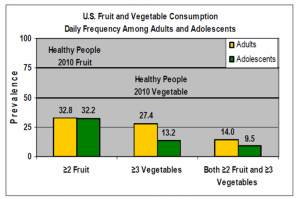 Green smoothies have attracted massive fans from the health community for decades…celebrated for their impressive nutrient content, convenience, and ease of consumption. There are even full books dedicated solely to green smoothie recipes, like Victoria Boutenko’s Green Smoothie Revolution and the recent Bo Rinaldi’s The Complete Idiot’s Guide to Green Smoothies. In fact, I advocate their benefits everywhere I speak, included recipes for green smoothies in both of my books, and even demonstrate them on shows like Reluctantly Healthy and The Dr.Oz Show. Here is the recent Dr. Oz Show 3-Day Detox Cleanse (aired 11/12/12) using green smoothies.
Green smoothies have attracted massive fans from the health community for decades…celebrated for their impressive nutrient content, convenience, and ease of consumption. There are even full books dedicated solely to green smoothie recipes, like Victoria Boutenko’s Green Smoothie Revolution and the recent Bo Rinaldi’s The Complete Idiot’s Guide to Green Smoothies. In fact, I advocate their benefits everywhere I speak, included recipes for green smoothies in both of my books, and even demonstrate them on shows like Reluctantly Healthy and The Dr.Oz Show. Here is the recent Dr. Oz Show 3-Day Detox Cleanse (aired 11/12/12) using green smoothies.
Recently, however, there has been a buzz kill accusing green smoothies of being harmful. The allegations floating about include that they:
- Raise blood glucose levels
- Enable the consumption of too many calories at one meal
- Damage endothelial cells, cause metabolic syndrome, obesity, fatty liver, etc. due to the high levels of fructose
- Can lead to kidney stones since leafy greens have high oxalate content
Let’s break these down….
Overall, there is no science that I am aware of directly implicating green smoothies as suspect in any of these accusations. There is, however, evidence supporting similar issues that people are hypothesizing apply to green smoothies, too. For instance, we know that fruit juice typically raises insulin levels quicker than the whole fruit because the fiber is removed. However, with green smoothies, the fiber remains, only it is broken down and may go through the digestive tract quicker than in its whole form. If you are diabetic or prediabetic, or are concerned about this, you can slow down the glycemic response (and accompanying insulin release) to a green smoothie by:
- Adding some fat or protein to the smoothie via seeds or almond milk, for instance
- Using more leafy greens and other vegetables (celery, carrots, or avocado) and less fruits
- Choosing higher-fiber fruits like berries, mango, and pears over lower-fiber fruits like bananas and grapes
When it comes to calories, most vegetable and fruit smoothies can contain anywhere between 200-500 calories per glass. My enormous It’s Easy Being Green Smoothie from The Complete Idiot’s Guide to Plant-Based Nutrition provides 460 calories for a whopping 36 ounces (equal to 4.5 cups)! It is so filling, I dare you to finish it! Thus, you can easily control for the calories simply by making a smaller smoothie, using it as a meal replacement, or compensating with the rest of your meal to fit your caloric requirements.
Let’s address the fructose controversy…
There is indeed evidence that high intake of fructose may lead to metabolic syndrome, obesity, fatty liver, insulin resistance, dyslipidemia, high blood pressure, and even kidney disease (here and here, for example). But what is fructose? Fructose is a simple sugar, a monosaccharide. For centuries, fructose was primarily consumed from natural sources like fruits and honey. In the last few decades, a main source for fructose became sugar, a.k.a. “sucrose,” a disaccharide with equal parts fructose and glucose. Additionally, man created high-fructose corn syrup in the 1970’s, offering up an opportunity for food manufacturers to save money, utilize the excess corn supply, and sweeten processed foods. Fructose consumption skyrocketed from approximately 4% of total calories before the year 1900 to an estimated 12% of calories now.
But just because fructose may be up to no good doesn’t mean that the naturally-occurring fructose in fruits and vegetables have the same impact as the sucrose and high-fructose corn syrup. This study and this one differentiate and note that not all fructose is the same, pointing out that fructose in fruit comes packaged along with fiber, vitamins, minerals, antioxidants, and phytochemicals that may outweigh any potential risk. In this letter to the editor from the Journal of The American Dietetic Association, it is postulated that the evidence pointing to fructose alone as cause for these chronic conditions may not consider excessive calorie intake as a possible confounding variable. It also suggests we need good human trials before we make conclusions on the metabolic effects of fructose.
By the way, the only research on endothelial cell injury that I found was this study that used pure fructose and was performed on rats.
Kidney Stones and Oxalates
Only about 10% of the population experience kidney stones in their lifetime. The most common types of calcium stones are listed in this table from the Canadian Medical Association; of which the hyperoxaluric one is associated with excessive consumption of leafy greens and other veggies (see Box 1 below).
The recent concern over green smoothies and kidney stones is in relation to the hyperoxaluria type. Oxalates are salts of oxalic acid, an organic acid found in many fruits and vegetables. They are normally formed into soluble salts and excreted in the urine. However, excess levels may lead to the formation of calcium oxalate stones in the kidney. This condition is very rare, usually genetically-based or may be due to dietary causes, like low calcium intake. In fact, increased intake of dietary calcium is recommended to reverse hyperoxaluria and prevent stone formation. Dehydration can also be a factor contributing to these types of kidney stones.
For the rare circumstances where there are kidney stones from hyperoxaluria, restricting oxalates may be warranted. There is also evidence suggesting that higher dietary intake of calcium may be protective against kidney stones, a mineral also abundant in leafy greens.
Because of the extreme rarity of kidney stones due to oxalate intake and the fact that most people don’t even come close to overconsuming these foods, avoiding them is unwarranted. There are far too many benefits from their consumption to risk foregoing them.
Speaking of benefits…
 Here are just some of the myriad reasons to bring back the love of green smoothies:
Here are just some of the myriad reasons to bring back the love of green smoothies:
- It’s a very convenient and efficient method of consuming adequate servings of fruits and vegetables. Only between 9.5 and 14% of the U.S. population takes in the minimum recommended intakes of fruits and vegetables…and that number includes fries and ketchup!
- Fruit and vegetable pureed drinks significantly increase “dietary and plasma phytochemical concentrations with a trend towards increased endothelium-dependent vasodilation.” (George, et al, 2012) This, in turn, decreases one’s risk for most chronic diseases.
- So many of us have a tough time remembering to chew our food well enough. Nutrients in plants are trapped within their cell walls. Humans are not designed to break down cellulose (plant fiber). Thus, blending the plants breaks down the cell walls for you, releasing the nutrients, and enabling adequate absorption of nutrients…..***Disclosure: this is NOT an excuse to not chew your food well…you should always practice chewing and chewing…and chewing every bite!***
- Because of the thick, creamy texture, smoothies may enhance expectations of satiety. (McCrickerd, et al 2012)
- As a Mom, I know how insanely difficult it is to get kids to eat their fruits and (especially) veggies. Whip ’em up into a smoothie and it gets much easier.
- The healthiest foods on the planet include leafy green vegetables, berries, other fruits and vegetables, hemp/flax seeds, and other ingredients that are typically included in a green smoothie. There is absolutely no downside to incorporating more of them into the diet.
Thus, I will continue to tout the beauties of a green smoothie and commend those who consume them. I have yet to see a client/student/friend/colleague/family member come to me with health issues due to an overconsumption of green smoothies. In fact, it is a perfect first step to improving your diet and I have seen hundreds of people kick off a healthier lifestyle simply by replacing one meal a day with a green smoothie.
*DISCLAIMER* This article is not meant to be medical advice. Please consult with your Physician and/or Registered Dietitian if you have any medical concerns before adjusting your diet!







This Post Has 8 Comments
Excellent, informative post Julieanna, we don't need any more obstacles or myths to discourage us from eating glorious plant foods -will be sharing widely!
Great article
Thank you, Julieanna! Great article and at a perfect time.
Eating Skinny recommends you read this if you like to drink Green Smoothies. Very informative from plant-based dietician, Julieanna Hever.
Great post Julieanna! Thank you so much for putting so much time and effort into this informative post! Thanks!
This is helpful information. I'm happy to have found my way to this link via a post by Whole Life Nutrition. I am itching to incorporate more greens into my smoothies and along with some variations to what I do now.
decided to start drinking green smoothies…after one month have gastric issues never had before and an onset of asthma. High oxalates can devestate your health. http://www.thehealthyhomeeconomist.com/how-green-smoothies-can-devastate-your-health/
Pingback: writeaessay